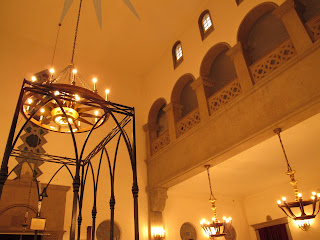Two sites of Jewish interest are included in the 2012 Watch List issued by the World Monuments Fund. Initiated in 1996, the Watch List is published every two years to call international attention to cultural heritage around the globe that is at risk from the forces of nature and the impact of social, political, and economic change.
The 2012 list includes the Portuguese (Sephardic) Jewish cemetery in Ouderkerk, in The Netherlands, famous for is distinctive carved tombstones.
Portuguese Jews settled in Amsterdam after fleeing persecution in Spain in the sixteenth century. Although northern Europe was tolerant during this violent period, the Portuguese Jews were refused a Jewish cemetery in the city. The community instead purchased land 31 miles from Amsterdam in 1614 at the confluence of the Bullewijk and Amstel rivers. Beth Haim covers 10 acres and has over 27,500 graves from over four centuries. The Portuguese Jewish community thrived in Amsterdam until the early twentieth century, and Beth Haim, which means “house of life,” is replete with refined carvings and inscriptions devoted to the dead.The other site is in Macedonia -- the ruins of the ancient city of Stobi, which include traces of two synagogues, one on top of the other: one dates from the 2nd or 3rd century, the other from the 4th century. Among the finds is a well-preserved mosaic floor with Jewish symbolism.
The location of the cemetery at the confluence of two rivers has led to significant water issues, compounded by a lack of regular maintenance. The local community today is committed to the preservation of the cemetery, but resources are limited. Open for public tours and in close proximity to Amsterdam, the local stewards of the site strive to raise public awareness and preserve the site for future generations.
Stobi lies at the confluence of the Crna and Vardar Rivers, and was an important urban, military, administrative, trade, and religious center of the Roman and early Byzantine empires. Thought to have been first inhabited in the sixth century B.C., significant urban development and demographic expansion occurred from the first to third centuries A.D. and Stobi continued to develop and expand until it was abandoned around the turn of the seventh century. The archaeological remains within the city walls occupy 27 hectares on three terraces that slope towards the Crna; suburbs and cemeteries are located outside the city walls. The site contains 26 exposed buildings, including a theater, synagogue, palaces, houses, basilicas, and baths, and has been excavated for nearly a century. Due to poor site drainage, Stobi is constantly threatened by flooding and rising subterranean water, and lacks an integrated plan for research, conservation, interpretation, and community engagement.
Stobi is one of the most significant and well-known archaeological sites in the Republic of Macedonia and provides insight into the historical events, material culture, and urban planning of the Hellenistic, Roman, and early Christian settlements in the area. A management plan is needed to guide continued research, protection, and tourism development.







































